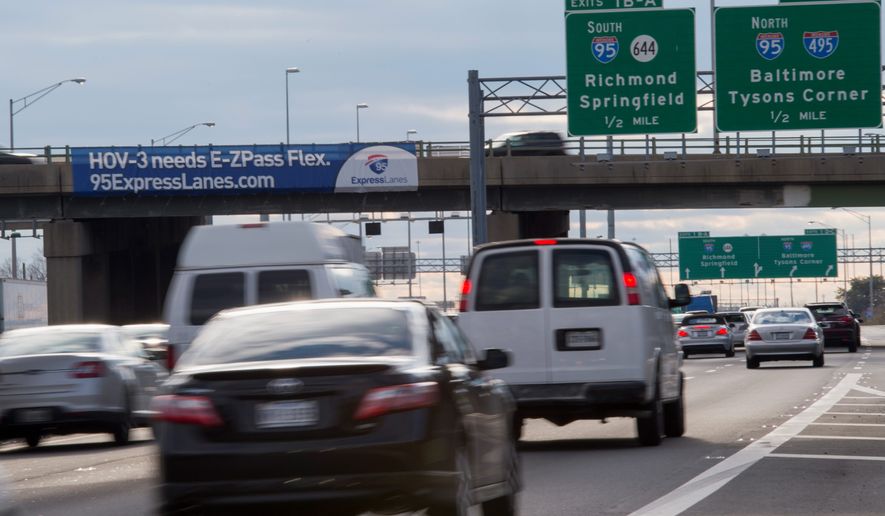The D.C. region will see “an exodus of biblical proportions,” with nearly 2.4 million people taking to the roads this holiday — the highest number on record and a more than 2 percent increase over last year, according to AAA Mid-Atlantic spokesman John Townsend.
“On an epic scale, four out of 10 residents — 43 percent of the populace — in the Washington metro area will embark on long-distance trips during the Christmas and New Year’s holiday,” Mr. Townsend said. “It is a decampment from the Washington metro area so massive that it may feel like everyone else in the world is traveling this Christmas.”
Nationally, holiday traffic has risen steadily since its nadir at the end of the 2008 recession, with about 85.7 million travelers across the country taking to the roads that year. For 2016, AAA projects about 103 million people will be traveling during the Christmas and New Year’s holiday and 94 million of those will be taking a car.
This is the ninth year in a row that holiday travel — defined to be trips longer than 50 miles between Dec. 23 and Jan. 2 — has increased. Traffic watchers attribute that uptick to rising wages, an improving labor market, increased consumer confidence and low gas prices.
The economic upturn has a lot to do with the increase in travel over the last eight years, Mr. Townsend said.
“Because of the recession, we didn’t travel,” he said. “Holiday travel, like leisure travel is always discretionary — from your disposable income. It’s all about how much disposable income you have.”
And though gas prices as of Dec. 21 are up slightly from last year on the same day, the average throughout the year is down compared to last year. AAA estimates drivers in the United States have saved more than $27 billion at the gas pumps so far this year compared to the same period last year.
“They’re still some of the best prices we’ve seen in the last decade,” Mr. Townsend said. “And it’s so late in the year that slightly higher gas prices won’t deter people from traveling.”
The national average price for a gallon of regular grade gasoline is hovering around $2.25, and the average price for the D.C.-region comes in at around $2.27.
In July 2008, when travel numbers were dramatically lower than the previous couple years, gas prices rose as high as $4.10 per gallon.
Broken down by mode of transportation, an overwhelming number of D.C.-area travelers will be driving to their holiday destinations. About 91 percent — or 2.4 million — of all those traveling this will be doing it by car.
Air travel also is projected to increase by about 3 percent, with 143,200 travelers flying compared to 138,800 who flew in 2015. Other modes, including trains and busses, will see a slight decrease. About 96,000 people in the area will travel by train or bus — a decrease of 0.3 percent from last year, when the number was 96,300.
The local numbers track nationally as well, with a 1.5 percent increase in automobile travel. About 94 million drivers will take to the road nationally this holiday compared to 92 million in 2015.
Air travel is expected to see a 2.5 percent uptick, with 6 million travelers nationally compared to 5.9 percent last year. And like the D.C. region, national bus and rail travel is down 0.3 percent from 3.52 million last year to 3.51 million this year.
The Christmas and New Year’s Day holiday travel will more than double that of Thanksgiving, when about 1.2 million residents fled the area. But to put that into perspective, the Turkey Day exodus happened over the course of just a few days, compared to the 11 days of travel between Dec. 23 and Jan. 2.
• Ryan M. McDermott can be reached at rmcdermott@washingtontimes.com.




Please read our comment policy before commenting.